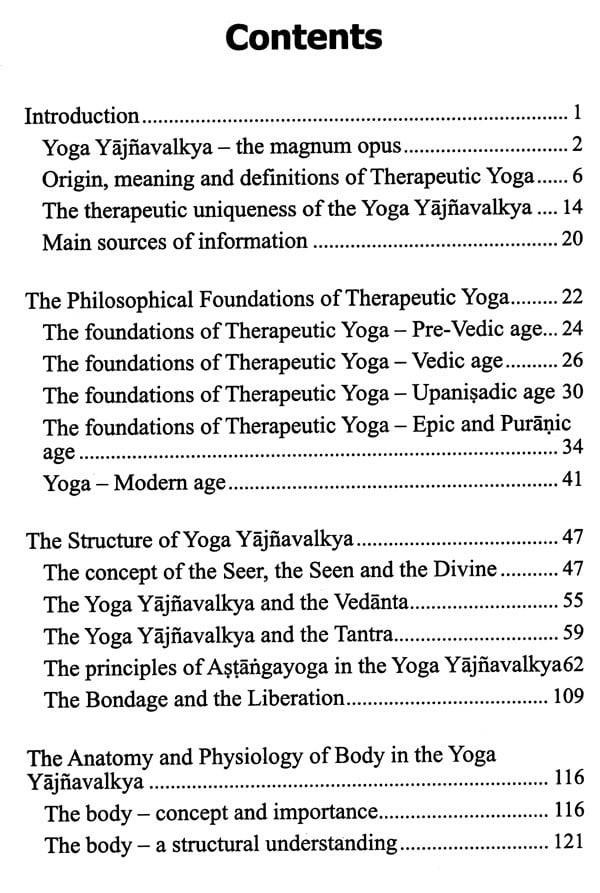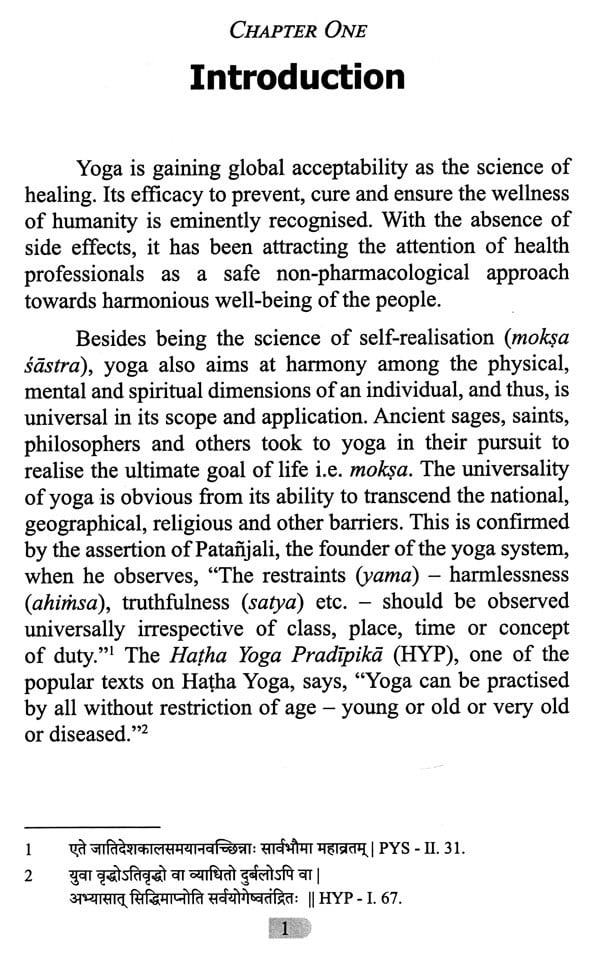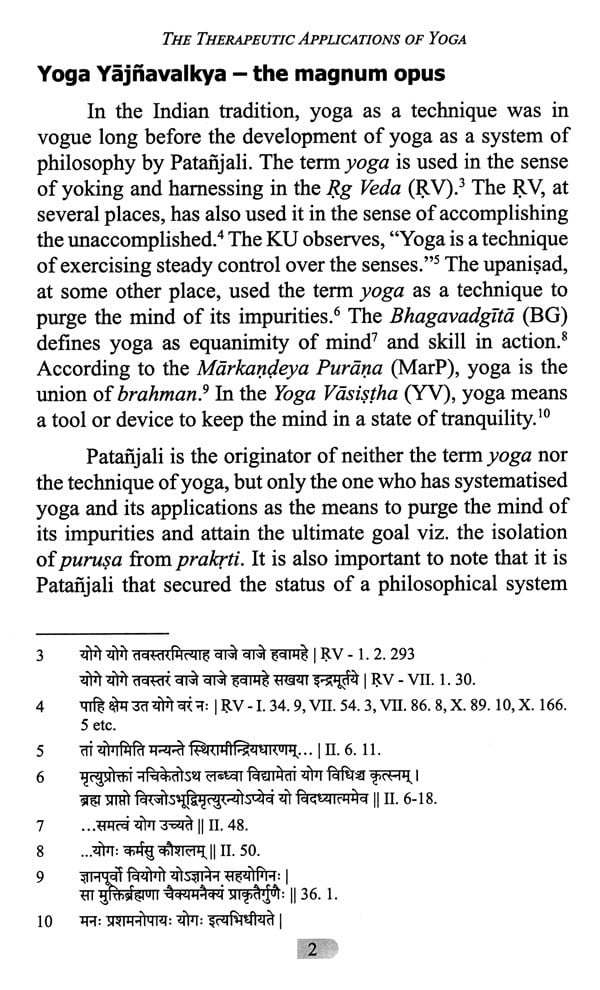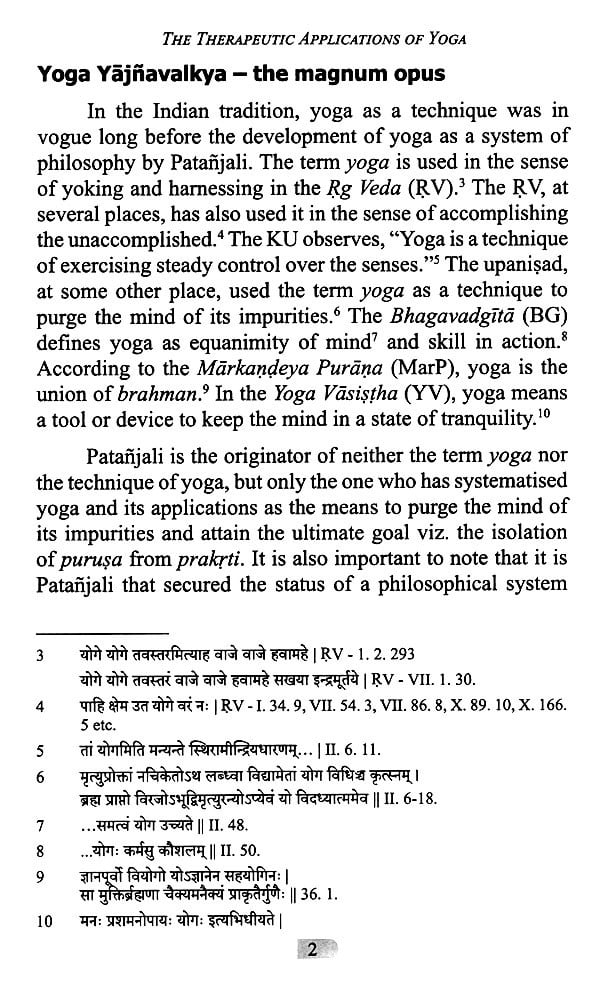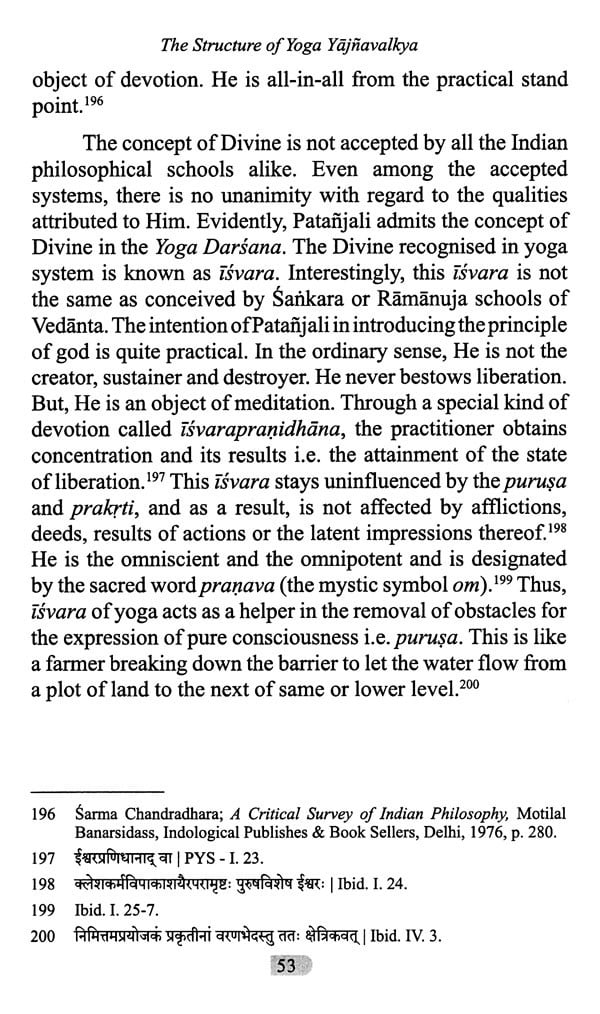
The Therapeutic Applications of Yoga
Book Specification
| Item Code: | NBZ834 |
| Author: | Rajendra Reddy Akuthota |
| Publisher: | Motilal Banarsidass Publishing House, Delhi |
| Language: | English |
| Edition: | 2020 |
| ISBN: | 9788194454779 |
| Pages: | 260 |
| Cover: | PAPERBACK |
| Other Details | 8.50 X 5.50 inches |
| Weight | 300 gm |
Book Description
Yoga is the gift of Indian wisdom to the mankind and was practiced by ancient seers and philosophers for achieving health, happiness and harmony. Yoga, on par with medicines, surgical practices, mantras, is well accepted as a method of treatment. The applications of bodily exercises (āsana), breath regulation (prāņāyāma) and mental quieting (dhyāna) ensure health and longevity.
Though Vasista, Yajñavalkya and Patañjali considered yoga as samsāra bheşaja, they never ignored its health benefits. The yoga of Yajñavalkya is unique in itself; it believes that the body is not a mere object but a cosmic process with limitless potential energies and is a key for several universal mysteries. For Yajñavalkya, yoga practice based on the principles of varņāśramadharma, kandastāna, marmastāna, pañcabhuta, tridoņa, prāna, agni, kundalini and others essentially develops insights into the events of life, which are necessary to health and healing.
It is with great concern and happiness I bring forward a book on the basis, principles and applications of yoga therapy for the benefit of all those interested in finding out an integrated solution for the prevention and treatment of stress-related diseases. At times, I feel unhappy at the very thought that in spite of impressive advancement, the western medicine has not been able to address the causes and management of the most common and disabling disorders of stress and strain which afflict almost every alternative individual owing to changes in lifestyle. In the absence of side effects, with its well defined doctrines and techniques to train and control the senses and mind, yoga has been successfully used to address many of the modern lifestylerelated health issues. Moreover, the vastitude of philosophies and disciplines of yoga has remained essentially the same for thousands of years and is recognised as a cost-effective nonpharmacological approach. The world health professionals are convinced of the fact and have accepted the same.
Yoga, as an applied philosophy, believes that prevention is better than cure. The sages, seers and philosophers of ancient India adopted yoga as a way of life and enjoyed a prolonged peaceful life. They practiced yoga to achieve the unachieved (apūrvārthasamprāptiḥ yogaḥ). In fact, scientific researches carried out to prove the efficacy of yoga found that yoga enables one to bring involuntary life processes under control. They also expressed the difficulty to arrive at the basis and principles of yoga therapy.
Sri B.K.S. Iyangār, the pioneer of the therapeutic yoga, feels “Yoga therapy is a difficult subject where one should have in-depth knowledge and experience not only in practice but also in the art of assistance, which is very essential in the art of healing.” The yoga manuals, with their terse and esoteric nature, hardly contain any direct references on the basis, principles and applications of yoga therapy. They have to be culled out from the vast amount of literature available on the subject. Sri M.V. Bhole, the Director of Research, Kaivalyadhama found the need to develop diagnostics and applications based on various concepts available in the classical yogic texts.
I am happy to have had the opportunity of going through the book The Therapeutic Applications of Yoga by Dr. A. Rajendra Reddy, who is an impeccable yoga practitioner. The Yoga has two dimensions - one of theory and the other of practice. Both of them are complementary to each other. Formed from the root yuj, yoga means 'union'. It is not necessary to specify the union with what. The one who is steeped in tradition would easily make out that it is with the ultimate reality. For this, some sort of control over the body and mind is necessary. Out of the two, it is the control over the mind which is difficult. The Lord has made a pointed reference to it in the Śrīmadbhagavadgītā. Addressing Arjuna (the word used for him there is Pārtha), he had said that the mind is difficult to control (mano durnigraham), as difficult as the control over the wind (tasyāham nigraham manye vāyor iva suduşkaram). With the mind under control, the control over the body i.e. the control of the physical movements, comes within the range of possibility. That is the reason that yoga has been defined as the control over the mind (cittavrittinirodhaḥ). It is this which leads to equanimity (samatva), one of the two definitions of it that the Lord gives in the Śrīmadbhagavadgītā, the other being skill in activities (karmasu kausalam), the skill being the result of the mental control which actually signifies its concentration, its focusing, which is the raison d'être of the development of skill.
**Contents and Sample Pages**
